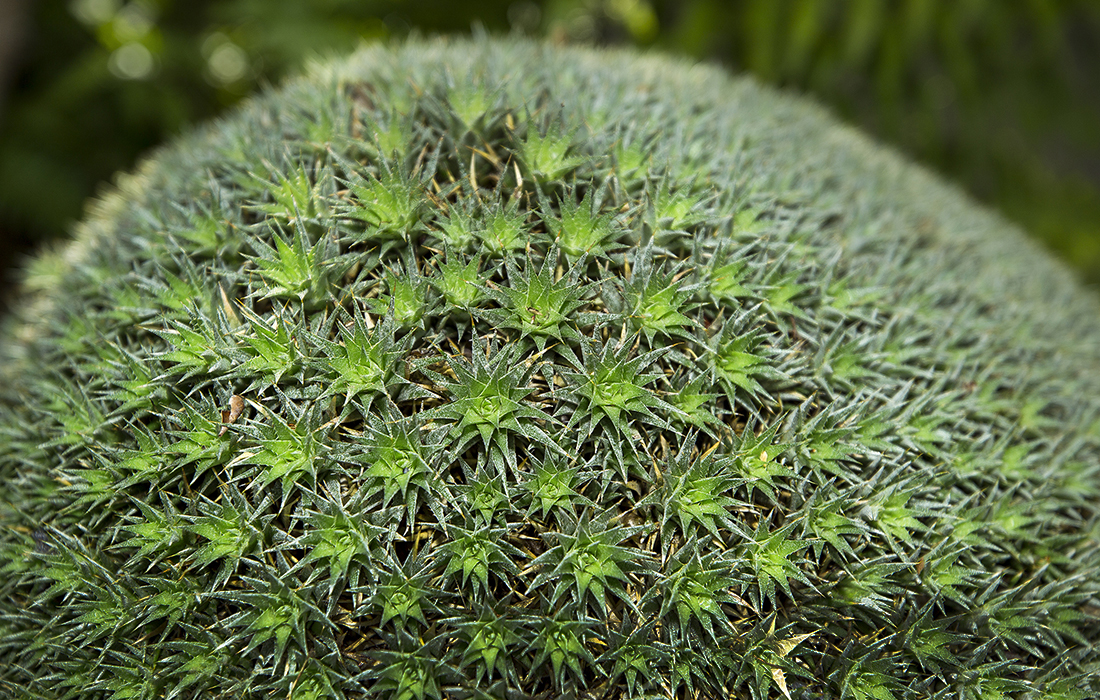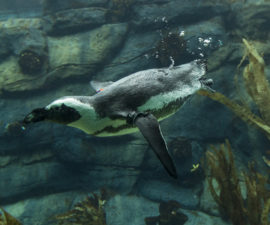Is it live, or is it plastic? These very real plants—some with neon-bright colors that look almost spray-painted on—are known for their ability to survive in challenging circumstances, and many even create their own ecosystems.
BY Eston Ellis
Photography by Tammy Spratt
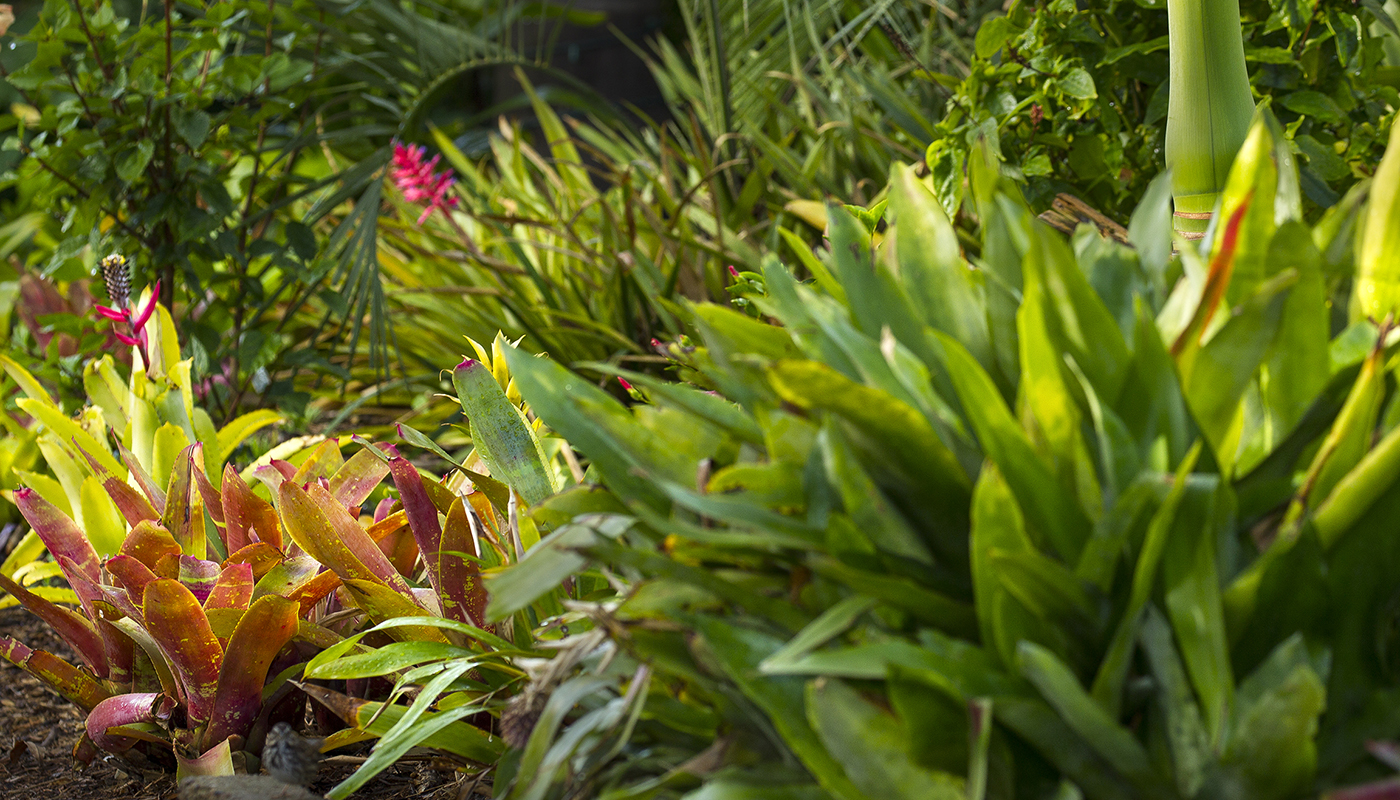
TROPICAL DELIGHTS
Whether they are big or small; grow in the ground, on rocks, or in trees; and live off nutrients from moisture in the air or water collected in their leaves, bromeliads come in a wide array of shapes, sizes, and colors, including plants from both deserts and rain forests. Bromeliads can be found throughout Central and South America and parts of North America, in many habitats and climates—ranging from sea level to mountainous elevations of up to 14,000 feet—with the largest number of species found in Brazil. Some bromeliads, notably Spanish moss, can be found as far north as Virginia in the US.
Until the 1980s, the bromeliad that most people were familiar with was the pineapple plant. Like most other plants in the bromeliad family, it originated in South America—not Hawaii. When Christopher Columbus arrived in the Caribbean in the 1490s, the indigenous Kalingo people of the Lesser Antilles were cultivating Ananas comosus for its delicious fruit. Columbus brought the plant to Europe; pineapple cultivation began in India in the 1500s, and large-scale cultivation of the plant as a cash crop eventually began on Hawaiian plantations in the 1800s.
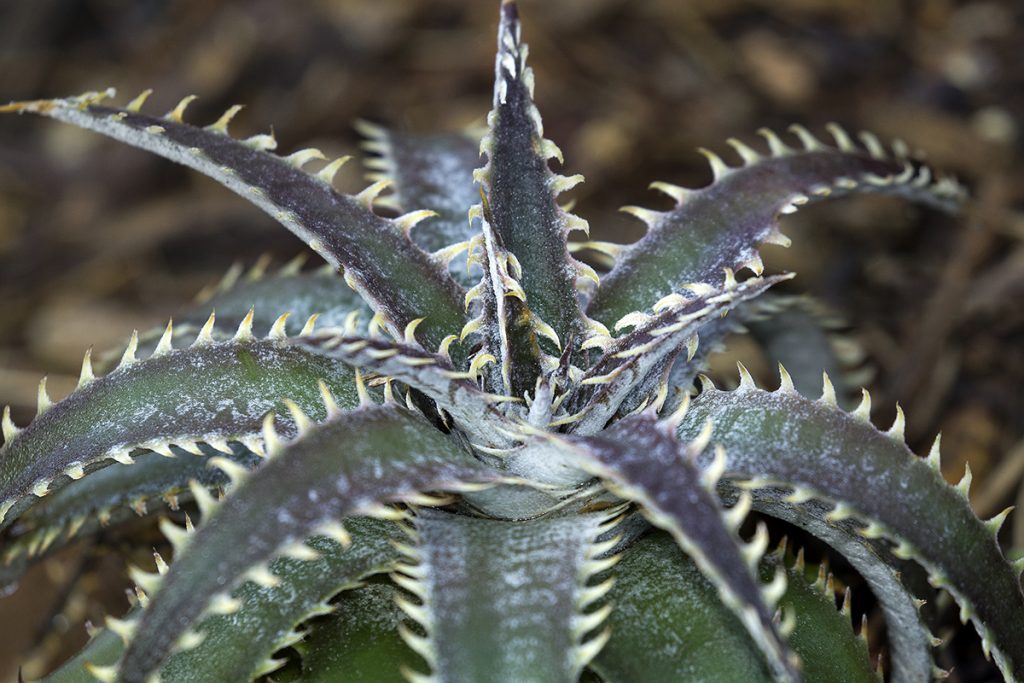
ECONOMY OF SCALE
Bromeliads use a variety of strategies to get the moisture they need. Most absorb water and nutrients through permeable scales on their leaves. When they become dry, these scales close tightly to seal in that valuable moisture.
However, the pineapple plant is just one of nearly 3,000 types of bromeliads, all but one of which are native to the New World. (The only Old World bromeliad, Pitcairnia feliciana, is native to western Africa.) Plants in the bromeliad family have three basic survival strategies: epiphytic, growing on other plants (including trees and shrubs); saxicolous, growing on rocks; and terrestrial, growing on or in the ground. From pineapples to potted plants, air plants, and Spanish moss; and from tiny and delicate plants to huge ones that can grow in thick groupings, there is a lot of variety in the world of bromeliads.
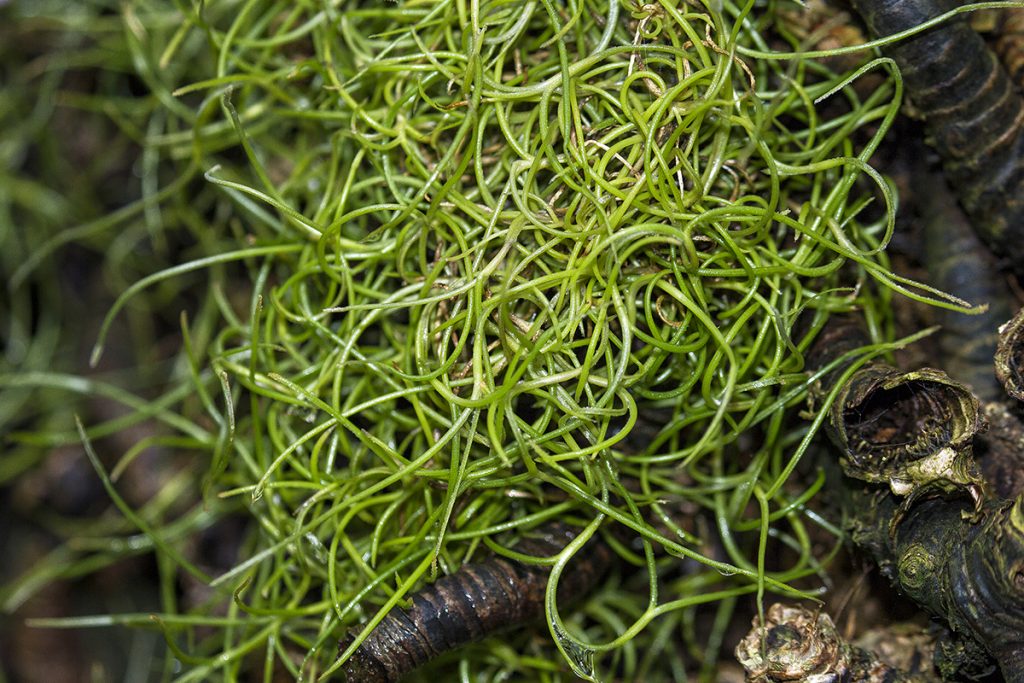
THEY’VE GOT IT WIRED
The bromeliad family includes many plants that attach themselves to tree branches and absorb necessary nutrients through the air, rain, and fog—including frilly Spanish moss and other wiry epiphytes.
In the 1970s and 1980s, a Southern California physician named Dr. Leonard Kent became fascinated with the most colorful bromeliad species of South America—species with bright red, yellow, orange, and green foliage. These plants produce a variety of delicate flowers on stalks, or within a rosette of leaves forming a water-gathering cup. He and his family began importing them, eventually cultivating them for the florist trade through their own nursery in San Diego County. He helped popularize bromeliads in the US by marketing them as houseplants and selling them in grocery stores and other locations.
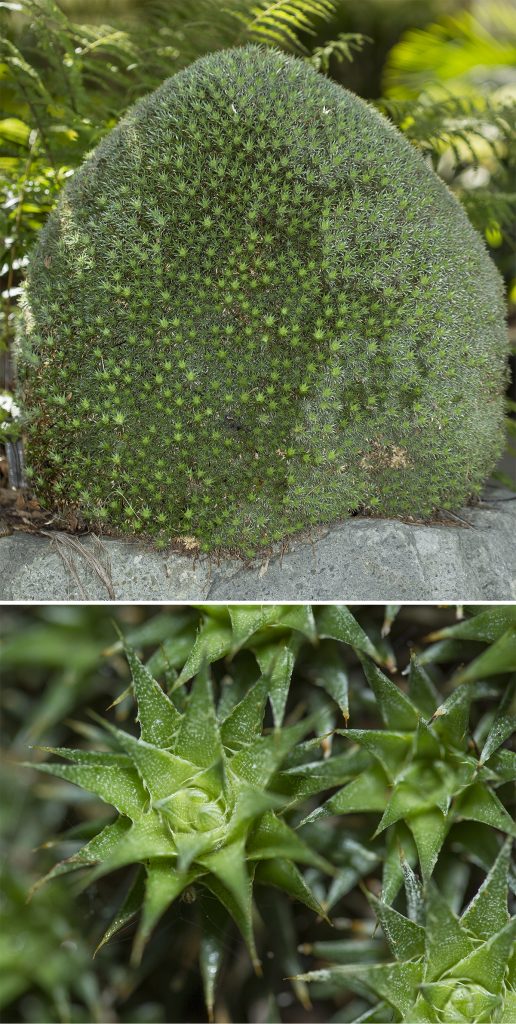
ON THE ROCKS
One of the Zoo’s most eye-catching bromeliad exhibits is a large bromeliad-covered rock at the entrance to the Orchid House. Tiny green rosettes of the bromeliad Deuterocohnia brevifolia, native to Bolivia and Argentina, cover every inch of this big boulder.
In 1984, he helped the San Diego Zoo create its Bromeliad Garden, located next to the Hummingbird Aviary near Wegeforth Bowl. It was rededicated as the Leonard Kent Bromeliad Garden in 2000, and it continues to thrive. “This garden is maintained by volunteers from the San Diego Bromeliad Society,” explained Stephanie Shigematsu, curator of horticulture at the Zoo. It is an excellent spot to see many different types of bromeliads of all shapes and sizes—including showy species that produce long stalks of flowers; bright red-, yellow-, or orange-topped rosettes; and variegated or striated foliage.
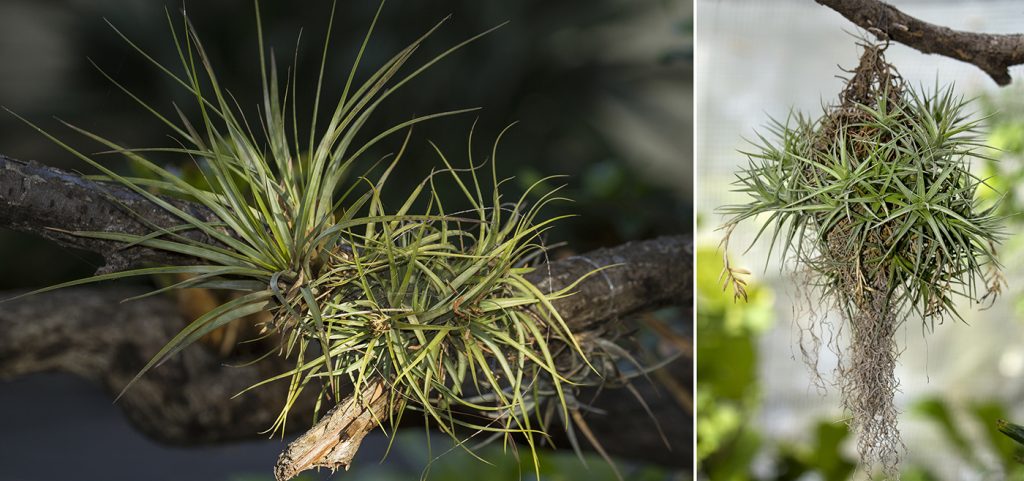
LIVING ON AIR
Tillandsia, sometimes called air plants, are bromeliads that attach themselves to tree branches and get their required moisture and nutrients from the air. Many can be seen in the Zoo’s Leonard Kent Bromeliad Garden—and one spectacular, nearly two-foot-long Tillandsia tectorum, native to the Northern Andes of South America, hangs near the entrance to the Orchid House.
However, it is not the only place to see bromeliads at the Zoo. There are bromeliads in upper Fern Canyon, growing in branches and treetops; along the path next to the Flamingo Lagoon; and at the entrance to the Orchid House, where Zoo guests can see two spectacular donations: a huge rock entirely covered with tiny green rosettes of the bromeliad Deuterocohnia brevifolia, native to southern Bolivia, and a nearly two-foot-wide hanging cluster of rock air plant Tillandsia tectorum, native to the northern Andes. At the Safari Park, you can see bromeliads growing from tree branches and vines in Hidden Jungle. “The Zoo has dozens and dozens of varieties,” Stephanie said. “Many of our bromeliads are from tropical regions, but some are from dry areas and have fine leaf hairs that hold nutrients and water.”
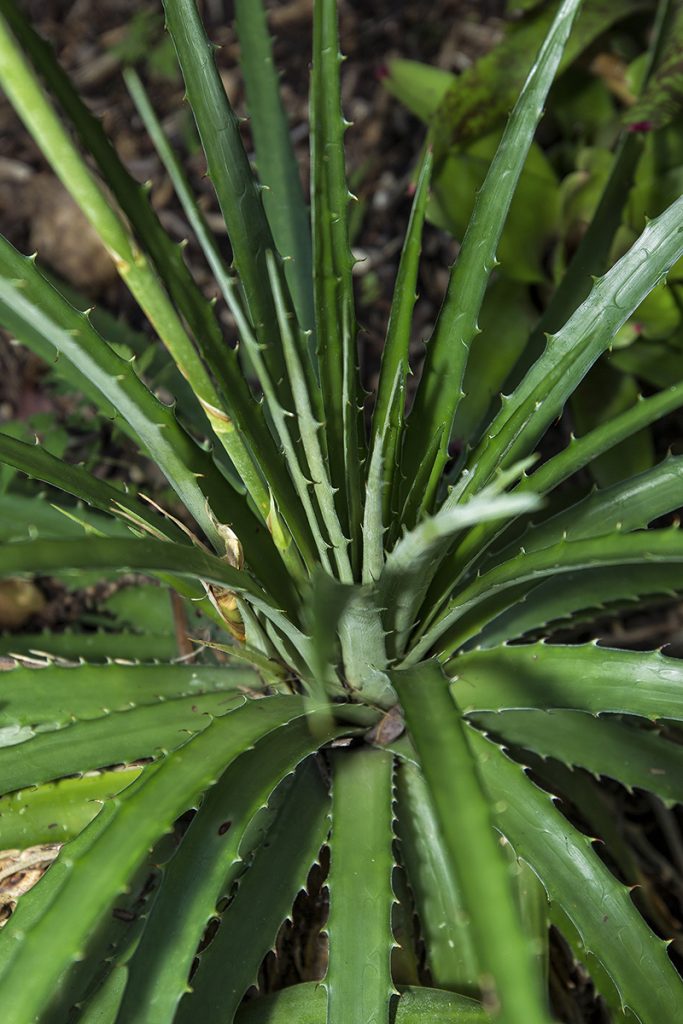
BARBED ARROWS
Dyckia, a genus of bromeliad often confused with succulents, includes many plants from desert climates. They are known for their spiky, barbed leaves.
 Bromeliads are a favorite food of Andean bears (the only bear native to South America). At the Zoo, they are also a favorite choice for nibbling by local “volunteer” rabbits.
Bromeliads are a favorite food of Andean bears (the only bear native to South America). At the Zoo, they are also a favorite choice for nibbling by local “volunteer” rabbits.
Among the many different varieties you might see in the Bromeliad Garden are marble plant Neoregelia marmorata from Brazil, with its green leaves marbled with colorful red swirls and splotches; Dyckia (pictured below), bearing barbed leaves and a tall red stalk with many branches that are dotted with yellow flowers; and coral berry Aechmea fulgens var. discolor, a bromeliad from Brazil with long, barbed leaves and a shocking pink stalk studded with clusters of pink and purple flowers. You may also encounter Hohenbergia stellata, with light green leaves and bright yellow flower-like foliage forming a tall rosette in the center of the plant; and Brazilian Neoregelia concentrica, with its elongated green leaves showing off red tips and red striation. You’ll also see tree branches and logs dripping with frilly Spanish moss, which is a bromeliad with a wiry core. “Years ago, Spanish moss was used to stuff life vests and mattresses,” Stephanie said.
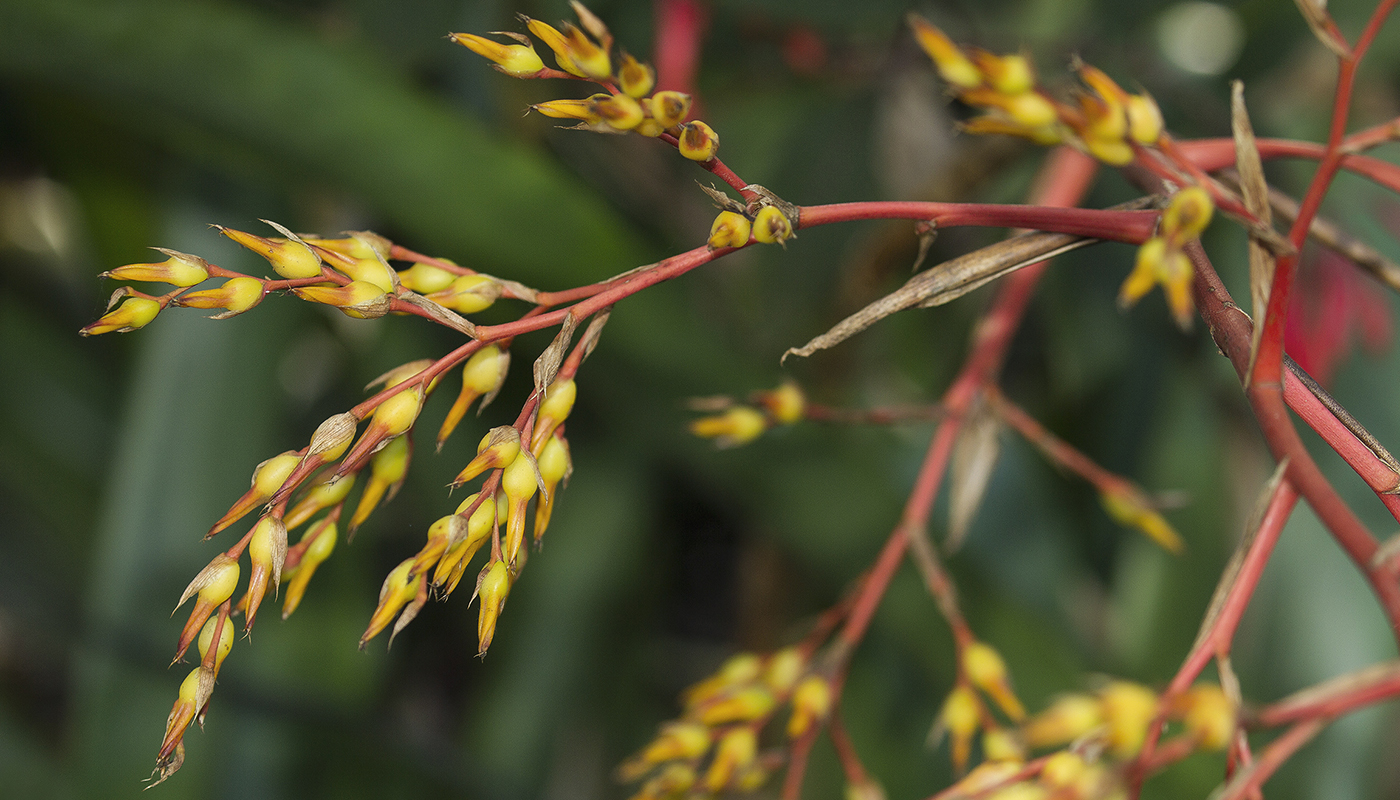
 Stripes on the leaves of bromeliads are produced by variations in their moisture-gathering scales, and by areas in the leaf that contain less chlorophyll, making them less green than the surrounding tissue.
Stripes on the leaves of bromeliads are produced by variations in their moisture-gathering scales, and by areas in the leaf that contain less chlorophyll, making them less green than the surrounding tissue.
Its Own Ecosystem
One thing that makes bromeliads special is that many create their own individual ecosystem, Stephanie said. Most bromeliads are known for collecting moisture constantly, with their long leaves funneling each droplet into a “cup” formed by the plant’s rosette-shaped foliage. That small pool of water is essential to the plant’s survival—and the water attracts insects that help pollinate the plant, as well as small frogs that eat those insects.
Bromeliads grown in gardens or on patios should have a garden hose sprayed into their cups once a week, to eliminate any stinky standing water and prevent mosquitoes from using them as a breeding ground, Stephanie said. “Fortunately, mosquitoes are not as much of an issue here in Southern California as they are in more humid places, like Florida. Ours is a dry climate.” Bromeliads use a form of photosynthesis known as C4, to efficiently create energy in a hot, dry climate with minimal water. Although many bromeliads are found in rain forests, they often grow in treetops, where they survive on direct moisture from rainfall or fog on their leaves, instead of taking in moisture from roots in the ground. Like corn and sugar cane plants, bromeliads take in carbon dioxide and transform it into four-carbon sugar compounds (C4); and they avoid photorespiration (when plants take in oxygen and give out carbon dioxide, instead of the other way around). Most bromeliads also absorb water and nutrients through permeable scales on their leaves. Although they become absorbent when they get wet, soaking up every droplet that comes their way, the scales seal themselves when they are dry, to lock in that precious moisture.
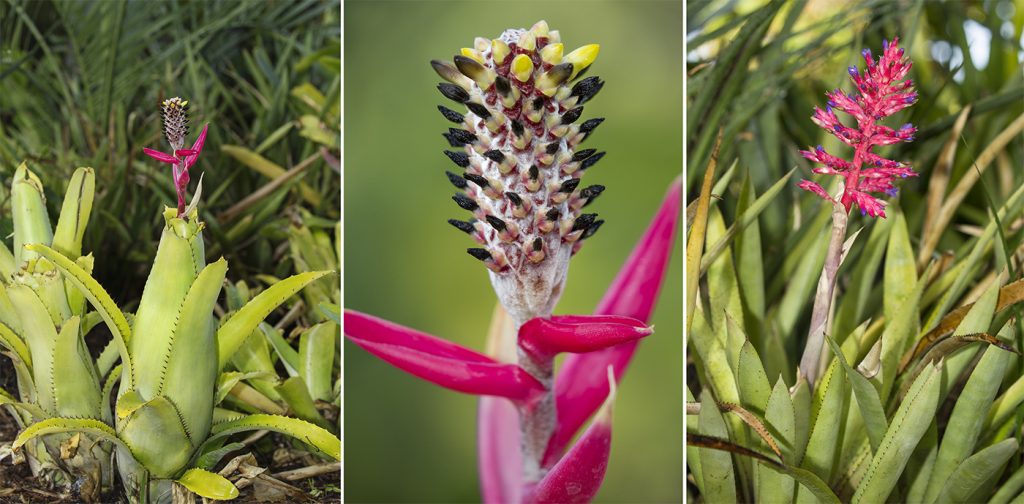
BURSTS OF BLOOMS
Flowers usually grow from a stalk in the center of a bromeliad’s rosette-shaped leaf cluster. Depending on the variety of the bromeliad, the stalk may be long and put out flowers above the leaves, or flowers may bloom inside the leaf cup.
Many bromeliads are epiphytic plants, and these typically do not get many nutrients from their roots. However, an epiphytic bromeliad’s above-ground roots can provide needed support for the plant, securing it tightly to a tree, log, or vine. Some of these epiphytic plants, commonly called air plants, are ideal for dry climates. They need only occasional water or misting, getting most of their nutrients from the air or rainfall. But whatever the type of bromeliad, most thrive in Southern California, in air temperatures between 40 and 90 degrees Fahrenheit.
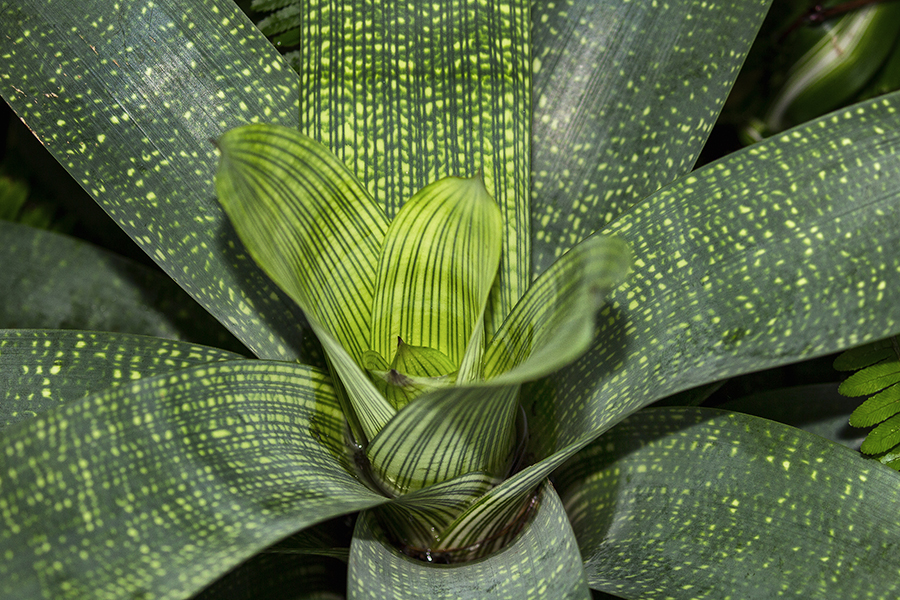
EARNING THEIR STRIPES
Bromeliads not only can be found in brilliant colors, but their leaves may also be variegated or distinctively striped.
Most bromeliads grown in home gardens and flower pots are the “cup” variety. Flowers usually grow from a stalk in the center of the plant. Depending on the variety of the bromeliad, the stalk may be long and put out flowers above the leaves, or flowers may bloom inside the leaf cup. “Bromeliads do well outdoors in the San Diego area,” Stephanie said. “They need mostly dappled shade, and they usually thrive as long as their cups are full of water.” While many bromeliads have showy foliage in a variety of colors, most plants bloom only once and then begin losing their leaves—but not before producing a smaller offshoot at the base of the plant. This is called a “pup,” and it can be separated and replanted when it reaches about half the size of the “mother” plant.
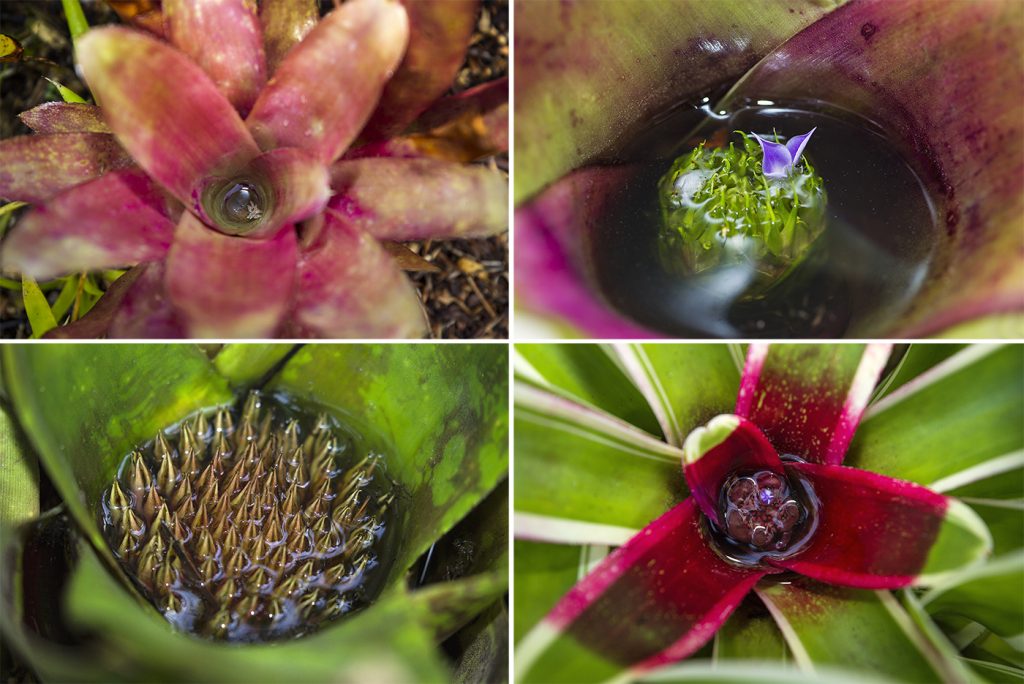
A CUP OF WATER
Many bromeliads have rosette-shaped clusters of leaves that form a water-gathering cup, and the leaves continually funnel moisture into this tiny reservoir. Insects are attracted to this water source, and they pollinate the plant when they drop in for a dip.
Whether you find them in rain forests, in deserts, or on a patio in San Diego, bromeliads offer exotic beauty and surprising resilience. Most require little water, many can retain their striking top foliage color for months, and some can hold their distinctive shapes for even longer than that—sometimes long after the plant has actually died. In fact, more than one gardener has been fooled by a bromeliad that has long ago dried out, yet still shows off its graceful lines.

